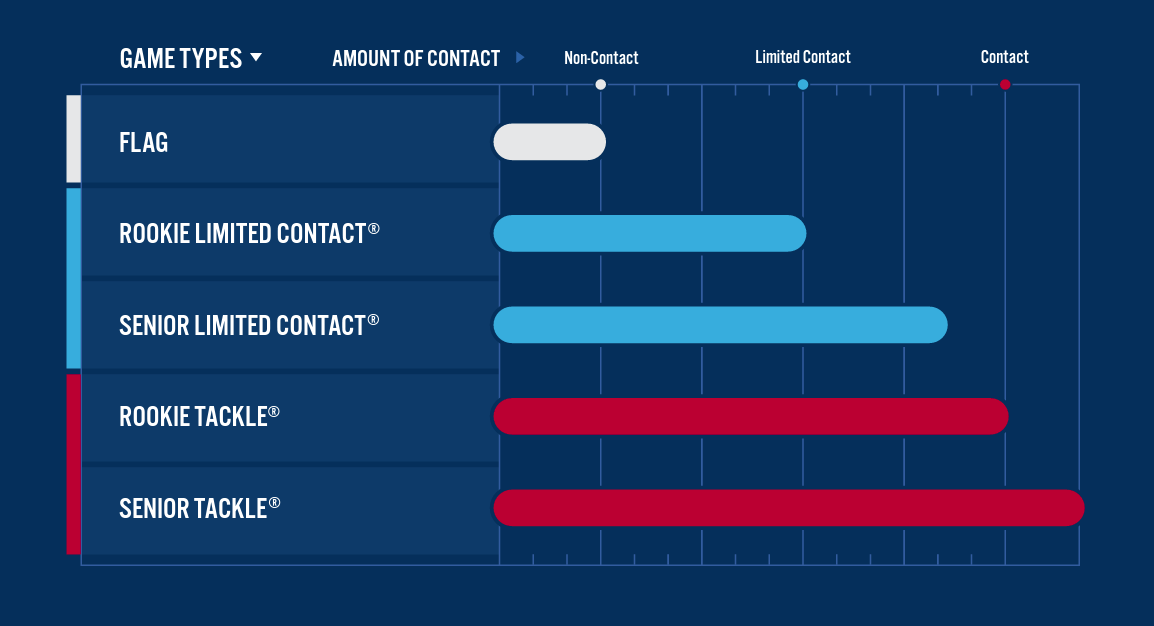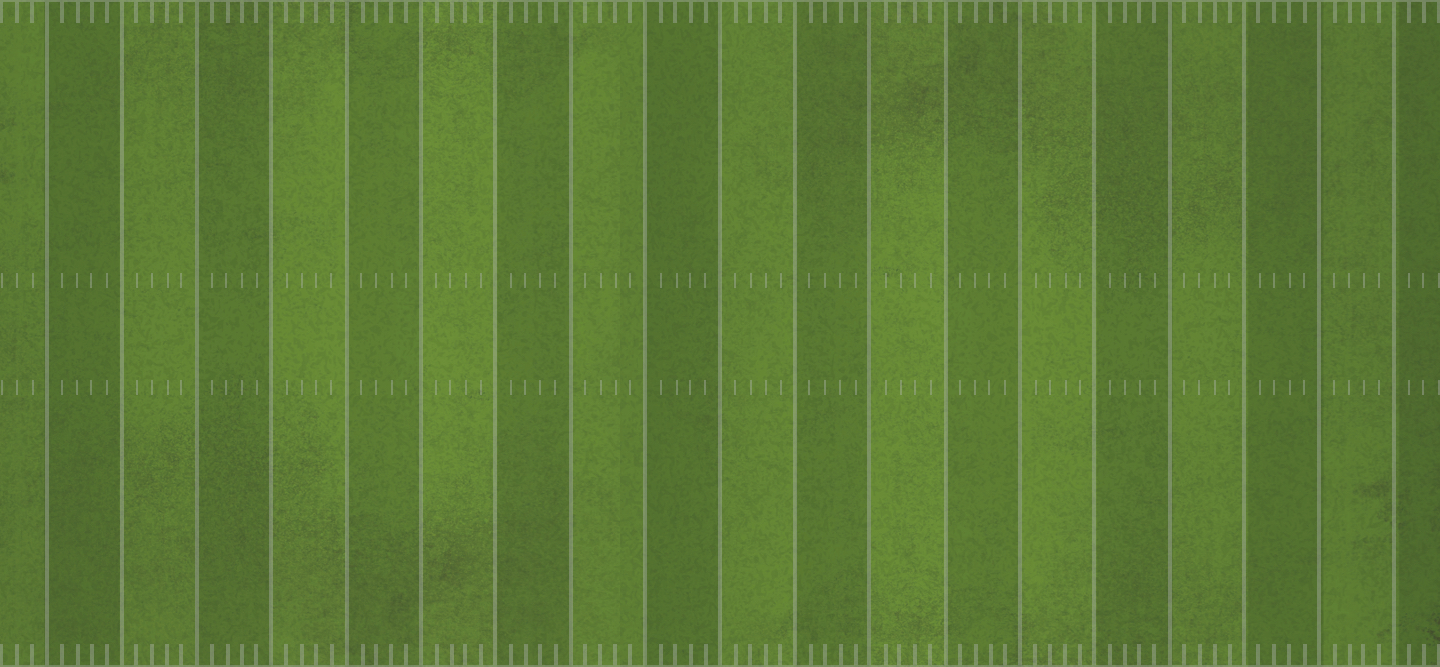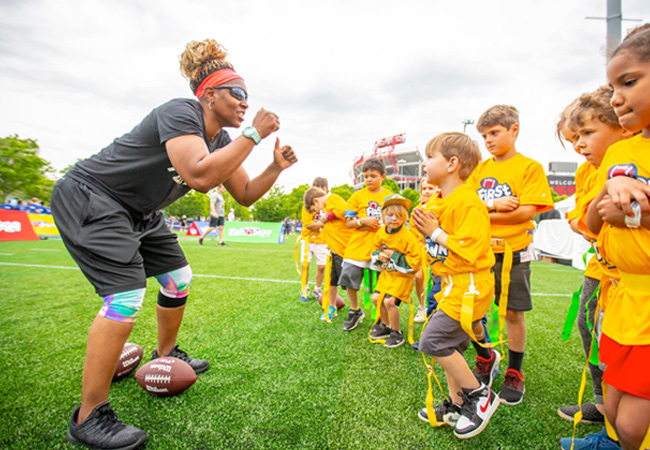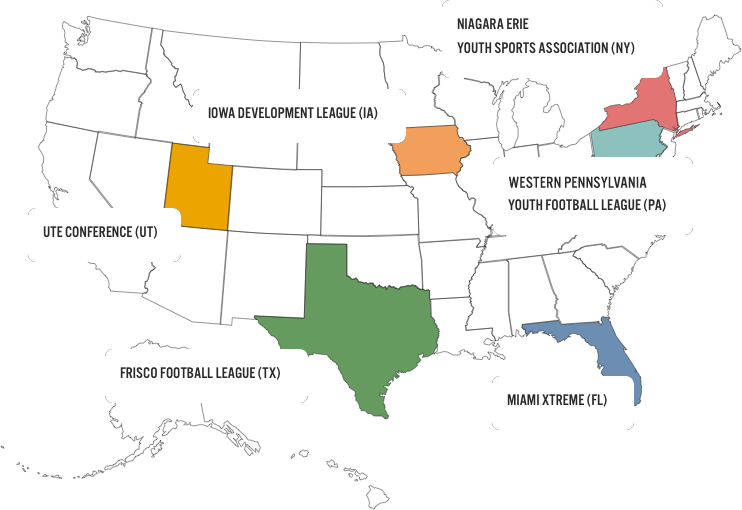
THE FOOTBALL DEVELOPMENT MODEL (FDM)
IMPLEMENTING THE MODEL
USA Football has tools to help you start and scale the model within your organization.

ENROLLMENT IS THE FIRST STEP
Getting started with the Football Development Model (FDM) is easy. Enroll your organization USA Football to access free resources and tools to help you start and scale the model within your league.
From operational resources for various game types and ways to play, rulebooks and playbooks to the League Excellence Program and grants eligibility, enrollment is a great way to kickoff your implementation of the FDM.



BUILDING SKILLS THE RIGHT WAY
Based on progressions, the model is designed to make the game safer by reducing contact and teaching the game based on an athlete's age, the skill they are learning, and game type.
Progressions are a step-by-step approach to teaching which makes it easier for young athletes to grasp a skill. Each progression is developed and evaluated to ensure it is logical, repeatable and transferable for every stage and game-type.
“We've implemented the Football Development Model and we saw it as a way to enhance our game, as a way to offer football to a wider audience and basically a way to just make the game better for everybody.”
JEFF GORRINGE
GENERAL MANAGER, UTE CONFERENCE (UTAH)
DERICK GRANT
FLAG COACH, FRISCO FOOTBALL LEAGUE (TEXAS)
GAME TYPES FOR EVERY ATHLETE
From flag to traditional tackle, USA Football has outlined the progression of game types to give leagues and players options to share and play the game. These game types, in addition to the skill and age progressions, help reduce contact and make the game safer.
BRINGING PLAYERS BACK

PUTTING THE ATHLETE FIRST
Keeping football fun and dynamic continues to capture the imaginations of young athletes. When you implement the Football Development Model in your organization, you’re creating an environment for athletes to learn and love the sport.
From non-contact to limited contact to full contact, there are more ways to play and more reasons to stay.
STAGE SUMMARIES
IMPACTING YOUR FOOTBALL COMMUNITY
WHAT IT MEANS FOR YOUR COACHES
Coaches are the ones that bring the principles of the model to athletes and drive the change. That’s why we need to equip them with the knowledge, confidence and ability to properly bring the model to life.
This model offers the most immersive educational resources football has ever seen, allowing coaches to cover every aspect of a young person’s development and deliver the best experience for their athletes.
WHAT IT MEANS FOR YOUR PARENTS
Parents have concerns about football and have other options for their children. The model is football reimagined and offers an exciting opportunity for your program. Leagues that adopt the model will offer a great athlete experience and the opportunity that families seek.
Additionally, youth organizations that enroll will receive best practices to help them communicate with parents and promote their leagues.

TAKE IT TO THE NEXT LEVEL
USA Football is introducing the League Excellence Program to recognize youth leagues based on how they operate against best practices established by USA Football. Leagues will receive benefits based on the level they achieve, including increased support and recognition from USA Football. Enrolling your organization with USA Football is the step towards eligibility, so enroll now and get started.

LEAGUES THAT IMPLEMENTED THE MODEL
USA Football worked with several organizations on a pilot basis to test and improve the model in 2019.
During the process, USA Football obtained feedback from all major stakeholders in the game - parents, coaches and administrators. This close-up, local engagement helped us discover new ways to connect families with standout youth leagues.
